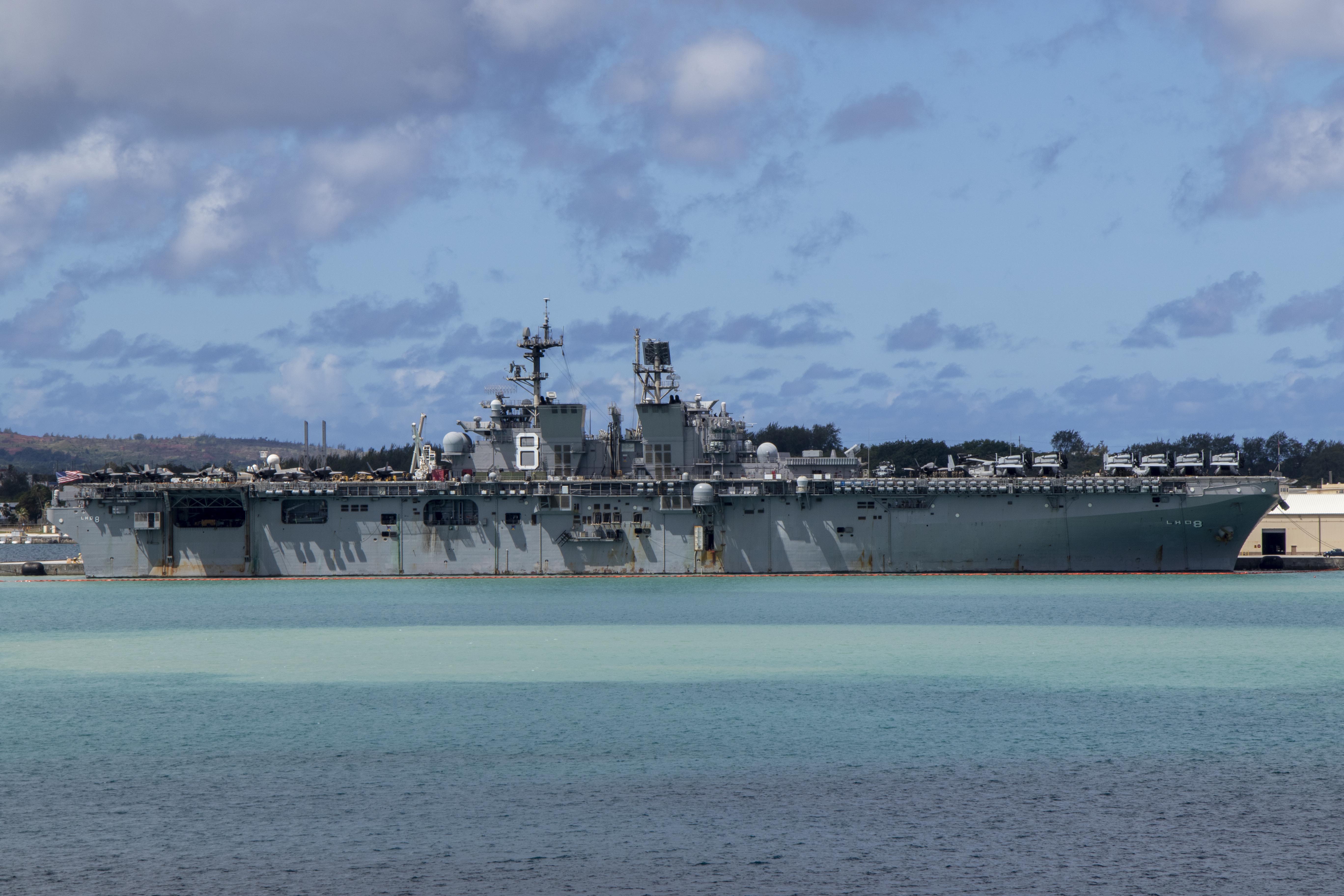
When the Makin Island Amphibious Ready Group returns from deployment this week, it will mark the beginning of a shift in how amphibious forces deploy globally – shifting naval resources away from the Middle East to the Western Pacific.
The three ships in the Makin Island ARG and the 13th Marine Expeditionary Unit joined in exercise after exercise in U.S. Indo-Pacific Command, demonstrating a high op-tempo in the Defense Department’s priority theater since the withdrawal of Afghanistan.
“We are the first ARG/MEU [from the U.S.] that has stayed in INDOPACOM in over 20 years,” Col. Samuel Meyer, the commanding officer of the 13th MEU, told USNI News in a recent phone interview.
It’s a departure from how ARG/MEUs have deployed for the last two decades, which typically saw amphibious ships with embarked Marines travel through the Indo-Pacific on their way to U.S. Central Command. Since 2000, every ARG/MEU that has deployed from the continental United States eventually made its way to CENTCOM, according to USNI News’ amphibious ship deployment data. The last ARG/MEU to operate in the Middle East was the Essex ARG and the 11th MEU in January 2022.
Makin Island’s seven months at sea in the Indo-Pacific allowed sailors and Marines to employ emerging platforms like the F-35B Lightning II Joint Strike Fighter, work with a Carrier Strike Group and operate with a slew of allies and partners in the region.
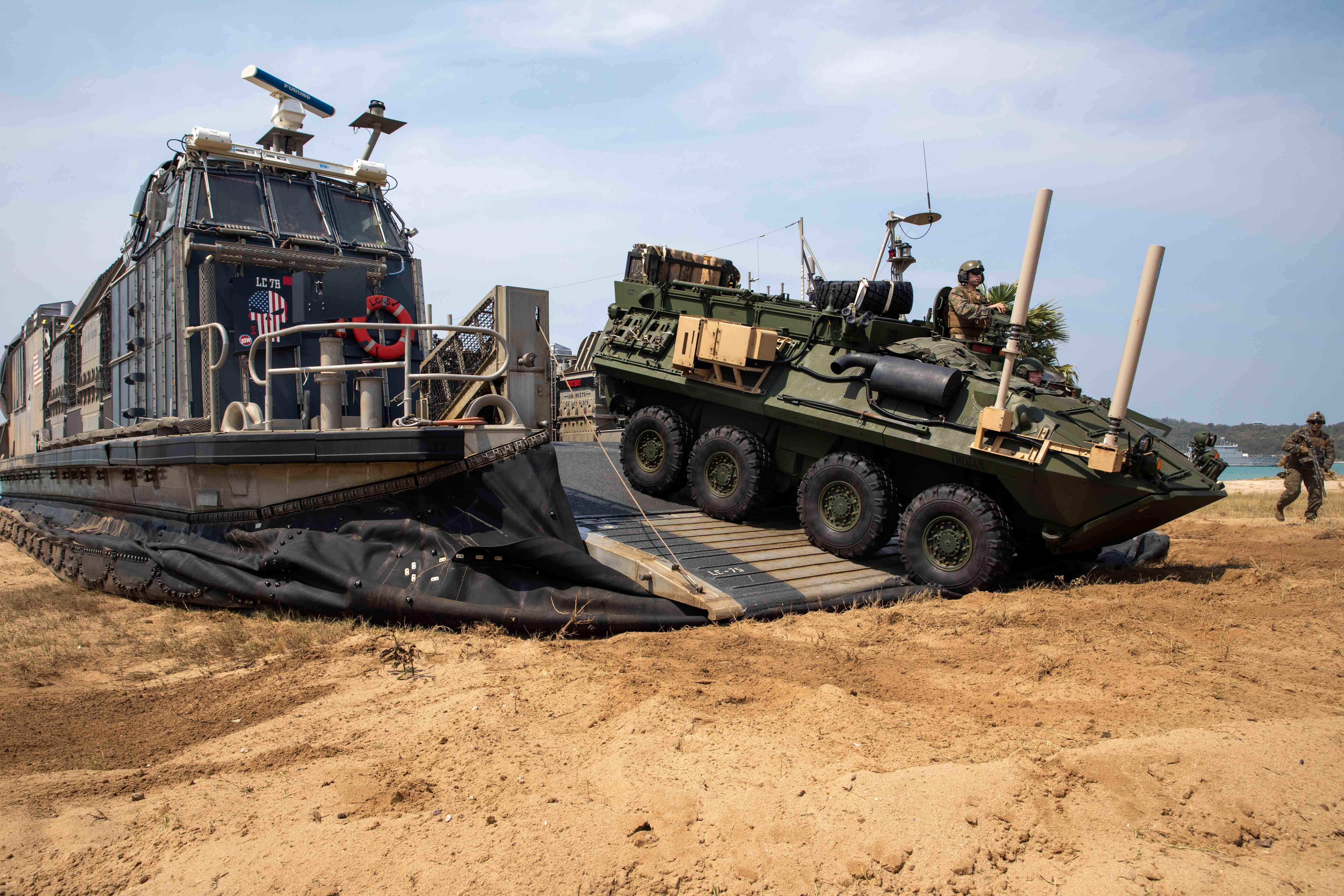
“On this deployment alone, we demonstrated everything from the high-end integrated air and missile defense fight with F-35s and MV-22s, all the way to practicing for humanitarian aid and disaster relief, or search and rescue, or medical operations,” Capt. Andria Slough, the commanding officer of USS Makin Island (LHD-8), told USNI News.
The ability to adapt to a wide variety of missions makes the ARG/MEU construct a viable one for the theater, particularly when it comes to deterrence and presence, Meyer argued.
“Imagine a group of ships with multiple warfighting capabilities on their decks, arrayed all across a large part of the Pacific that can see, sense, find, fix, target, track across hundreds and hundreds of miles. And then able to shift as it sees or detects risk – I think that we’re seeing the future and we’re seeing the future start to manifest itself in the present,” he told USNI News.
With 10 F-35Bs, 10 MV-22B Ospreys, four CH-35E heavy lift helicopters, four AH-1Zs, and four UH-1Ys, and MH-60Ss across the ARG, sailors and Marines could conduct missions ranging from close-air support for Marines ashore to logistics to integrated air and missile defense at sea.
“The only reason that specific MEU/ARG team was able to do that is because there was a big deck and then there were two LPDs,” Lt. Gen. Karsten Heckl, the deputy commandant for combat development and integration, said of the ARG’s numerous aviation platforms.
Future Amphibious Force
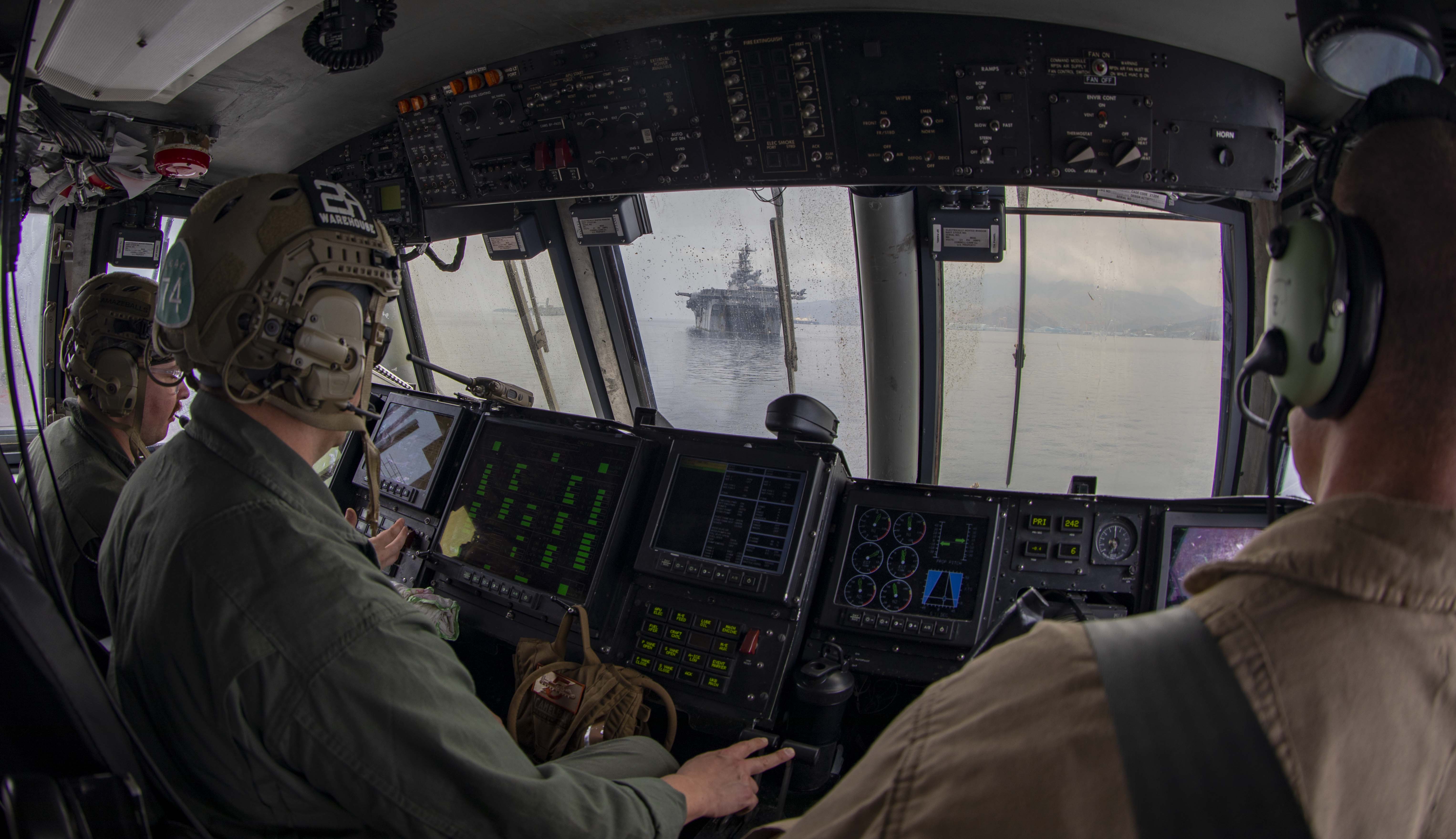
The Makin Island ARG and 13th MEU left Naval Base San Diego in November en route to the Indo-Pacific, kicking off seven months of exercises and operations that took elements of the ARG from Timor-Leste to South Korea, to Sri Lanka.
The ARG’s three ships – amphibious assault ship Makin Island and amphibious transport docks USS John P. Murtha (LPD-26) and USS Anchorage (LPD-23) – allowed the team to cover that distance and perform such a diverse set of missions, leadership said.
“When you combine the ships and the MEU, it’s kind of like having an app for that,” Slough said. “‘Hey I need some disaster relief over here.’ Okay we got an app for that. I’ve got these 42 Marines that will do this and I can put them on this ship that will go over here with these aircraft and do X, Y and Z.”
At one point during the deployment, John P. Murtha was operating near Yokosuka, Japan, while Anchorage sailed to Sri Lanka for the Cooperation Afloat Readiness and Training exercise, leaving Makin Island in the middle of U.S. 7th Fleet to perform the air and missile defense mission for the entire area of responsibility, Slough recalled. The big-deck amphib pulled data not only from the other ships in the ARG, but also from cruisers and destroyers operating in 7th Fleet.
“When you pair an ARG/MEU team with radars and missiles that are very similar to what a carrier has and then put the F-35s on it, it makes a very viable system. Our communications and link structure on Makin Island in particular is very similar to a CVN,” Slough said. “So we are able to link and forward pictures and make command decisions in much the same way – and provide our commanders with – much of the same information a CVN does.”
The combination of the three amphibious ships with the embarked Marines is key to deterring potential adversaries and is a visible representation to both adversaries and allies of what the U.S. is doing in the region, Meyer argued.
“I’m not here if I’m not on a ship. The only reason we’ve been able to do that is because we’ve come off these L-class ships – these three L-class ships that make up an ARG. So that is the offer that I have for the value for the National Defense Strategy and how we fit into competition, deterrence, reassurance, all the way up to the high-end fight,” Meyer said when asked what value amphibious ships bring to the Indo-Pacific.
Carrier Strike Group Integration
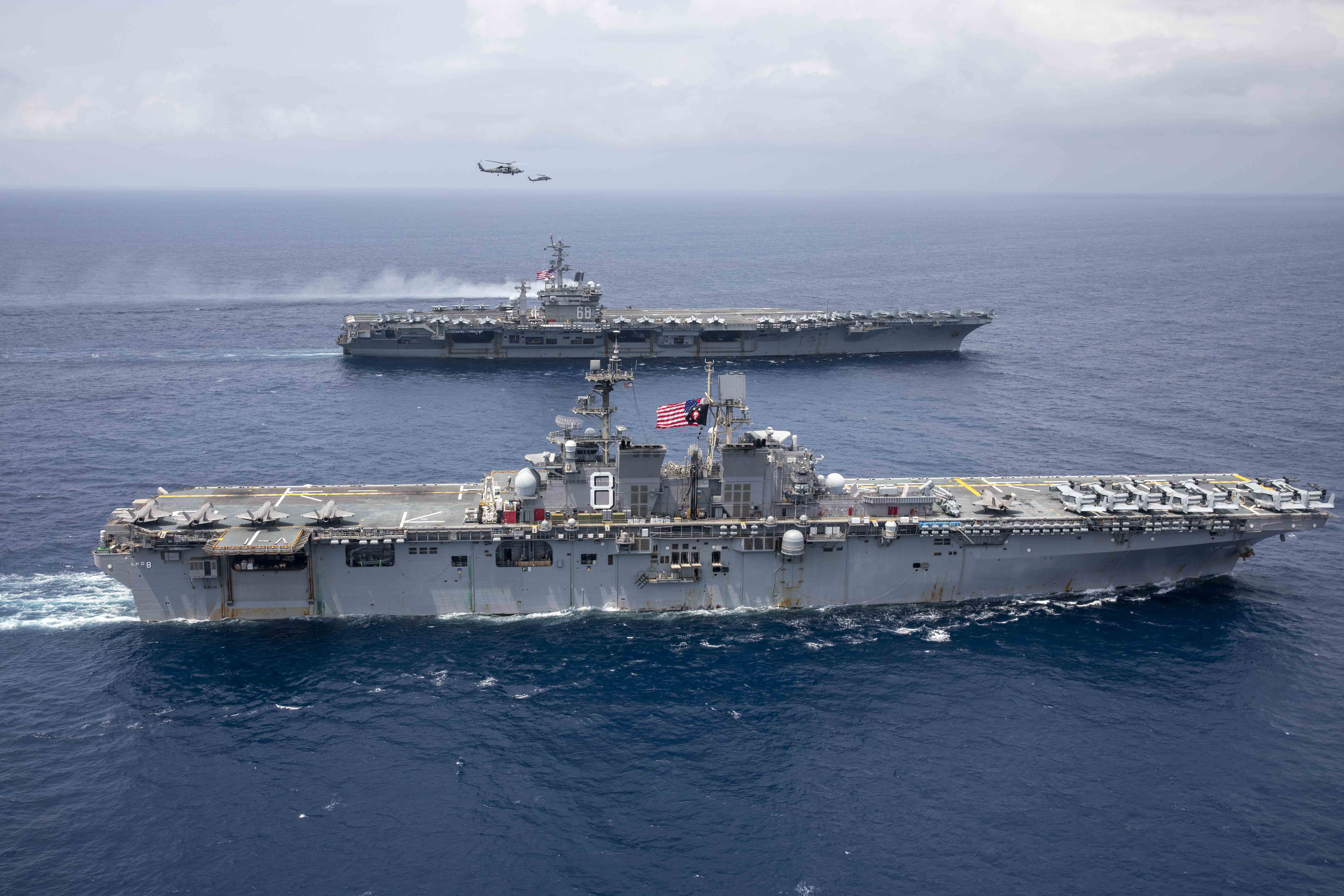
Makin Island’s recent deployment also allowed the Navy to continue experimenting with the so-called “assault carrier” concept, in which a big-deck amphib that has a squad of F-35Bs aboard works with a carrier strike group.
Last summer, USS Tripoli (LHA-7) started this experiment by drilling with the Abraham Lincoln and Ronald Reagan CSGs during exercise Valiant Shield. But USS Abraham Lincoln (CVN-72) had its own squadron of F-35Cs at the time.
With a full squadron of fifth-generation fighters aboard Makin Island for the first deployment of that configuration, during the February operations, the big-deck amphib brought a capability that the Nimitz Carrier Strike Group doesn’t have yet. As a result, the crews teamed Makin Island’s F-35Bs with USS Nimitz’s (CVN-68) F/A-18 E/F Super Hornets and E-2D Advanced Hawkeyes.
“We made a strike force with fully integrated chains of command, fully integrated tasking. And it wasn’t the carrier does everything. Makin Island served as the integrated air and missile defense commander for a few days of that. The tasking was combined for the air forces and even the ground forces,” Slough said.
“And then we had an amphibious demonstration that we did with synthetic geography, where the carrier strike group and its air assets were supporting the ARG/MEU team as we did an amphibious demonstration,” she continued.
Like the U.S. Navy’s carrier strike groups, the Makin Island ARG operated under the composite warfare commander concept throughout its deployment.
“This ARG MEU team has done that since its inception,” Slough said.
While there are differences between what a CSG and an ARG can do, Meyer said integrating the two is the prime example of naval integration between the Navy and Marine Corps, which has been a top priority for the two services over the last few years.
Meyer pointed to the ARG’s ability to put small units of Marines ashore and to use expeditionary advanced bases to operate as a sensing node for the naval force.
“To say that an ARG/MEU can’t do things that a carrier can do, we’re starting to challenge that paradigm,” he said.
Fifth-Gen Aviation
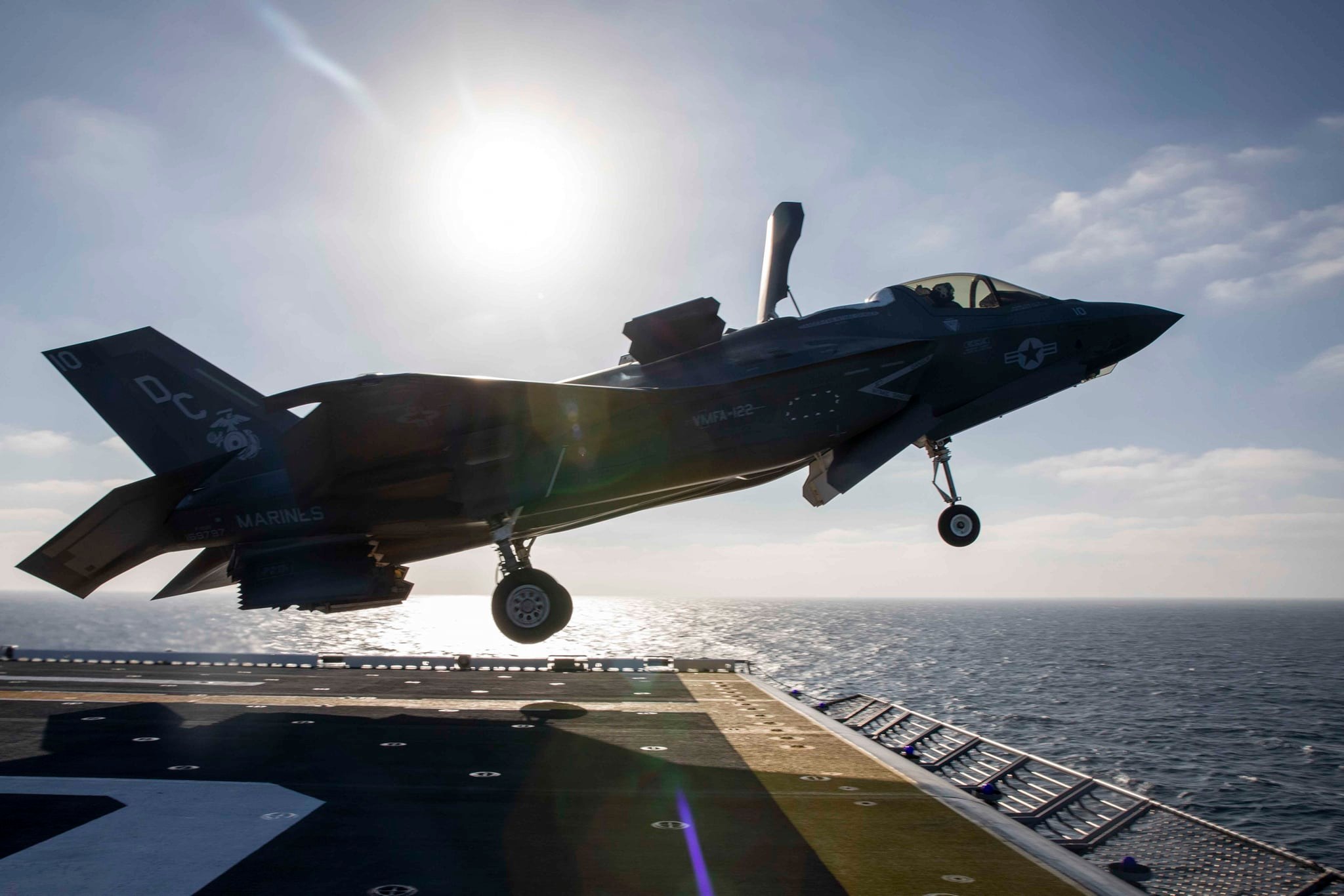
With that squadron of F-35Bs aboard Makin Island, the ARG/MEU employed the short takeoff and vertical landing fighters for missions ranging from ship-to-shore operations to sinking ships.
“We’ve demonstrated their capability to integrate with a carrier strike group. We’ve demonstrated their capability to support Marines ashore and we’ve demonstrated their capability to defend the fleet. So we’ve used them for about everything that I think we could have possibly used them for,” Meyer said of the F-35Bs.
For example, during the annual Balikatan exercise with the Philippines, two F-35Bs fired the four GPS-guided GBU-32 bombs in the sinking exercise, or SINKEX, that sank the Philippine Navy’s decommissioned corvette BRP Pangasinan. It was the first SINKEX for the annual Balkitan drills, which were the largest in the exercise’s history.
“The first two that dropped bombs on it sank it in 15 seconds,” Meyer said. “And it’s all within view of whoever may want to see that … it was for any potential adversary and all our partners and allies to see what we are capable of doing.”
In addition to employing the F-35Bs to sink the old corvette, the Marines used their UH-1 helicopters to gather information and demonstrated that the attack helicopters could also sink the ship if necessary.
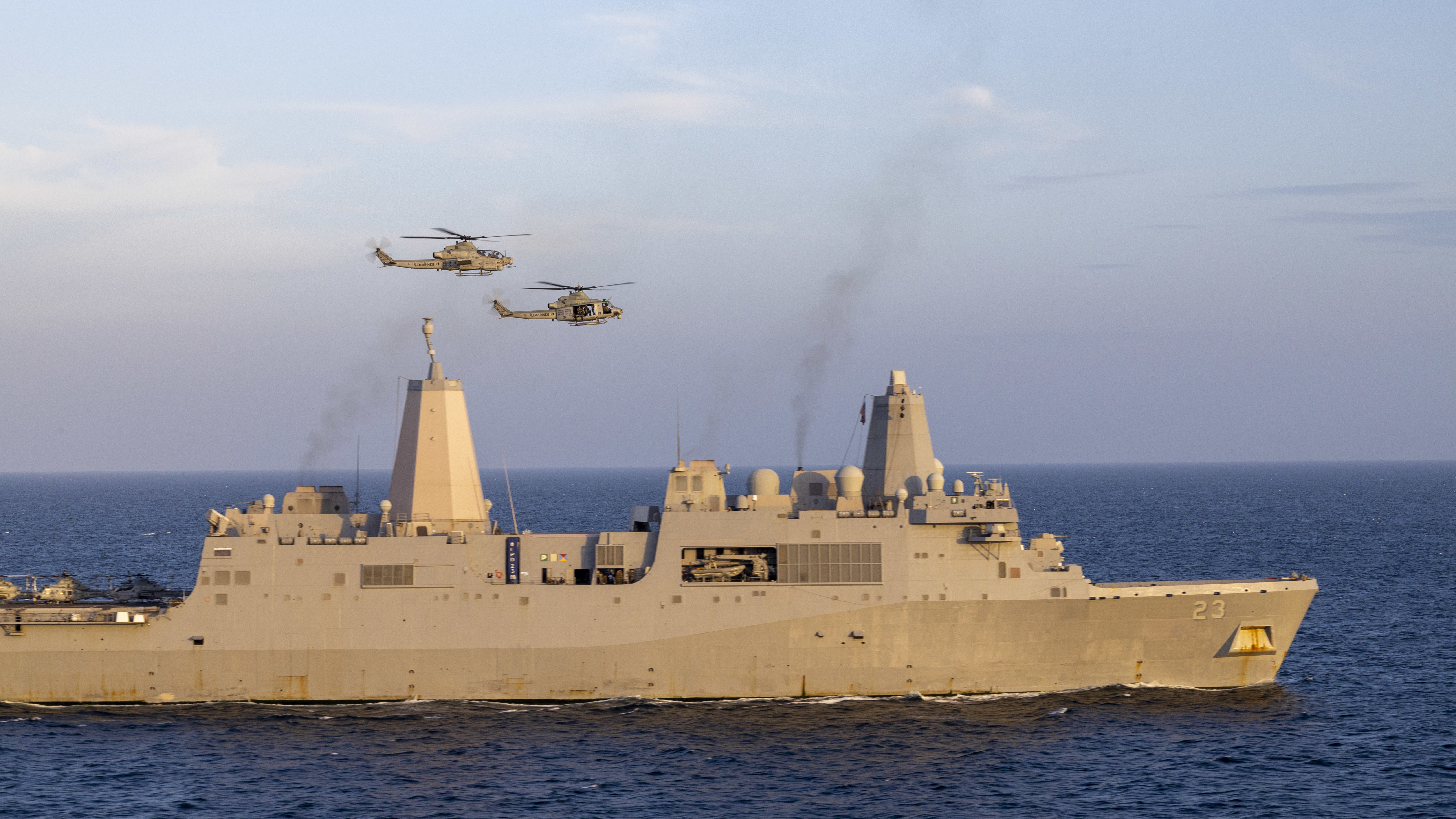
“We had H-1s go out and shoot at the ship and they were able to get some valuable feedback from the weapons. So everything that the H-1s shot – whether it was laser-guided rockets or [Joint Air-to-Ground Missile] – every one of them hit and would have given us a mobility kill or a function kill on the ship.” Meyer told USNI News.
Between the F-35Bs and the squadron of MV-22B Ospreys aboard Makin Island, the crew figured out how to make the most of the space on the flight deck and how to adapt when a fighter may be needed over the tilt-rotor, or vice versa.
“I think we’ve increased the potential of what an LHD can do and we continue to stretch the limits of what is possible,” Meyer said.
The common thread between the aircraft on the flight deck and the Marines and sailors performing their various jobs is that they’re all operating from the amphibious force.
“I have seen V-22s launch and I have seen F-35s landing while we are recovering [Landing Craft Air Cushions] in the back. That is a thing of beauty,” Meyer said.
“That is just not common for a lot of ships. But this ship demonstrates it daily.”





